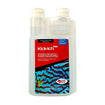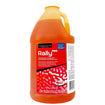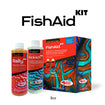- No products in the cart.
The Complete Guide To Protecting Your Aquatic Pets From Velvet Fish Disease
29
Jul
Velvet disease, caused by the parasitic dinoflagellate Oodinium, is a common yet serious ailment that affects both freshwater and saltwater fish. Also known as gold dust disease, velvet appears as a fine, yellowish dust on the fish’s body, often leading to severe health issues if not treated promptly. This article will delve into the symptoms, diagnosis, and effective treatments for velvet fish disease, providing aquarium enthusiasts with the necessary tools to combat this dangerous parasite.
Recognizing Velvet Disease
The early detection of velvet disease is critical due to its rapid progression and high mortality rate. Infected fish typically show a range of symptoms including:
Excessive Mucus: Fish develop a thicker layer of mucus in an attempt to fend off the parasite.
Clamped Fins: Fish may keep their fins close to their bodies.
Scratching: Infected fish often scratch against tank decorations or the substrate due to irritation.
Rapid Breathing: As the parasites invade the gills, affected fish will display increased respiratory rates.
Loss of Color and Appetite: As the disease progresses, fish may lose their appetite and coloration, becoming lethargic.
Diagnosing Velvet Disease
Accurate diagnosis usually involves close observation of the fish’s symptoms and behavior. In advanced cases, a light shone on the fish may reveal a rusty or golden sheen, which is indicative of the velvet parasites covering the skin. For a definitive diagnosis, microscopic examination of skin scrapings can be used to identify the presence of Oodinium parasites.
Treatment Strategies
Once diagnosed, immediate treatment is crucial. Below are several effective methods to treat velvet disease:
Quarantine Infected Fish: First, remove the infected fish to a separate quarantine tank to prevent the spread of the disease to other aquatic life in the main tank.
Copper-Based Medications: Copper sulfate is commonly used to treat velvet because of its effectiveness in eliminating the parasite. It’s critical to maintain the correct dosage and to monitor the copper levels constantly to avoid toxicity; typically, 0.15 to 0.2 mg/L for about 10 to 14 days.
Formaldehyde Treatments: Another effective chemical for treating velvet is formaldehyde, which can be used in the form of commercial medications. It’s essential to follow the specific dosage instructions to avoid harming the fish.
Increasing Water Temperature: Raising the aquarium water temperature can accelerate the life cycle of the parasite, allowing the medication to work more effectively. However, this should be done gradually and within the temperature tolerance levels of the fish species.
Dimming Lights: The velvet parasite utilizes photosynthesis; thus, reducing light can help slow down its reproduction. Keeping the aquarium in a dimly lit room during treatment can be beneficial.
Improving Water Quality: Regular water changes and maintaining excellent water quality are crucial during and after treatment to support the immune system of the fish.
Preventive Measures
Prevention is always better than cure, especially with a disease as aggressive as velvet. Preventive measures include:
Quarantine New Arrivals: Always quarantine new fish for at least two to four weeks to observe for any signs of disease before introducing them to the main tank.
Regular Water Testing: Regular testing of water parameters helps in maintaining a healthy environment that supports the immune system of fish.
Nutritional Support: A balanced diet enhances the overall health of fish, making them more resilient against diseases.
Conclusion
Velvet fish disease is a formidable challenge for any aquarist, but with the right knowledge and tools, it can be effectively managed and treated. Early detection and immediate treatment are crucial to saving affected fish and preventing the spread of the disease. By implementing strict quarantine measures and maintaining high standards of tank hygiene and water quality, aquarists can minimize the risk of velvet and other diseases, ensuring a healthy and vibrant aquarium.





